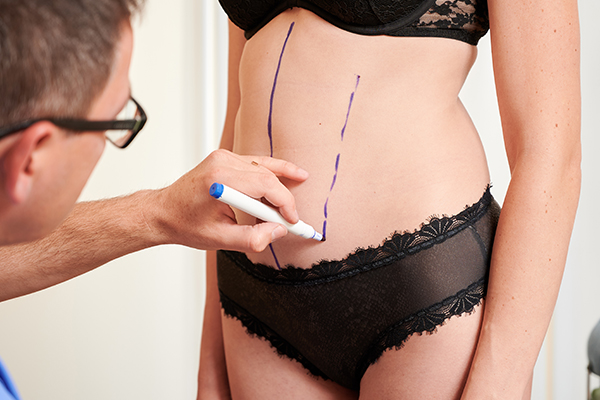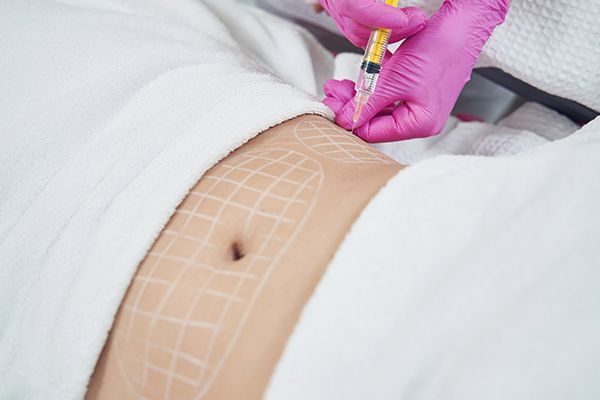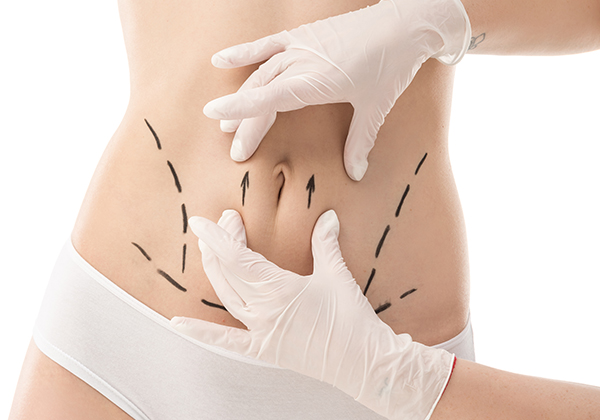

Liposuction: How Much Fat Can You Take Out?
One of the most common cosmetic operations worldwide, liposuction helps people shape their bodies by removing extra fat from different body parts. People considering liposuction often ask how much fat can be effectively removed during liposuction. This blog will discuss the liposuction procedure’s limitations, safety issues, and expected results.
What is Liposuction?
Surgically removing excess fat deposits from particular body parts using vacuum-like equipment is called lipoplasty, suction-assisted lipectomy, or liposuction. This body-contouring method is intended for those near their target weight but with persistent fat deposits; it is not a weight-loss method.
The following are the most frequently treated parts for excess fat removal and body contouring with liposuction techniques, such as traditional liposuction, and more modern techniques, such as power-assisted liposuction, laser-assisted liposuction, and ultrasound-assisted liposuction.
- The abdomen
- The thighs
- Arms
- The hips
- The buttocks
- The back
- Neck and chin
Depending on the size of the treatment, either local or general anesthesia is used for liposuction, which usually involves some recovery time.


What Are the Limits of Maximum Fat Removal?
A patient’s body weight, general health, and the method employed all affect how much fat can be safely removed during liposuction. Nonetheless, medical experts have established the following guidelines to reduce localized fat deposits for body contouring.
Common Recommendations
Most plastic surgeons adhere to recommendations that no more than five liters, or around eleven pounds, of fat should be removed in a single surgical procedure. The risk of problems, including excessive blood loss, fluid imbalances, and surgical trauma, is significantly increased if more is removed than this.
Types of Liposuction Procedure
Liposuction is a common cosmetic surgery that removes excess fat from different body parts. Tumescent liposuction is a widespread technique involving injecting saline, lidocaine, and epinephrine fluid into the treated area to liquefy fat cells and eliminate them. The liquefied fat is extracted using a suction device in suction-assisted liposuction (SAL).
Ultrasound-assisted liposuction (UAL) is another modern technique that breaks down fat cells with sound waves before sucking them out. These treatments help patients achieve a contoured figure by eliminating excess fat. The advantages of each liposuction technique can differ based on the treatment area and the amount of fat being removed.


Factors Affecting Limits on Fat Removal
Certain factors affect the limits on fat removal through plastic surgery procedures like liposuction. Your body shape, BMI, and several other factors affect the limitations of how much fat you can remove in any body contouring procedure.
Body Mass Index (BMI)
Although liposuction is not a weight-loss operation, patients with a higher BMI may be able to handle removing a slightly larger volume of fat.
Skin Elasticity
Excess fat removal, particularly in regions with low skin elasticity, can cause drooping skin. To help with aesthetics, surgical procedures to remove excess skin are performed on patients with loose skin.
Health Status
Pre-existing medical issues such as heart disease, type 2 diabetes, or poor circulation may limit the quantity of fat that can be safely removed through liposuction surgery.
Surgical Site
The safety limit is lower in an outpatient arrangement than in a hospital, where more involved operations can be closely monitored.
Multiple Sessions
Some individuals may benefit from several months of liposuction rather than having too much fat removed in a single surgical procedure session.


Implications of Excessive Fat Removal
Serious side effects can result from trying to remove too much fat in a single session of liposuction procedure, such as:
- Overwhelming bleeding
- The infection
- Seroma, or subcutaneous fluid buildup
- Unusual bodily features
- Fat embolism, which is the potentially fatal entry of fat particles into the circulation
- Chronic bruising and swelling
- injury to the nerves
Therefore, it is essential to adhere to safety regulations during cosmetic surgery to reduce risks and guarantee the best outcomes.
Having Realistic Expectations
When contemplating liposuction, patients should have reasonable expectations. Improvement, not perfection, is the aim. While liposuction is an excellent body contouring procedure that allows you to smoothen your fatty bulges, realistic expectations are important. Here are some essential things to keep in mind:
Liposuction is best suited for people around their optimal weight; it does not treat obesity.
Outpatient procedure. Results take time: After surgery, swelling and bruising are expected, and the full effects could take three to six months to show.
A healthy lifestyle is necessary to maintain outcomes since fat might reappear in regions that have not been treated if diet and exercise are not followed. Skin tightening may be required: Patients with loose or excess skin may need additional surgeries, such as skin tightening treatments or tummy tucks for the loose skin.


How to Calculate How Much Fat Should Be Removed
The best course of action if you are thinking about liposuction is to speak with a board-certified plastic surgeon. They will discuss your objectives, assess your body composition, and suggest a reasonable amount of fat loss. Among the critical factors are:
- Your present weight and percentage of body fat
- The regions you want to focus on
- Your medical history and general health
- The degree of suppleness in your skin
In addition to outlining the procedure’s advantages and disadvantages, the surgeon may provide supplementary or alternative therapies to assist you in reaching your goals.
The Long-Term Effects of Liposuction on Your Body
The long-term effects of liposuction on the body should be taken into account. Even if fat cells are permanently eliminated from the treated locations if a patient puts on weight after the treatment, the residual fat cells in the body may still enlarge. This phenomenon implies that gaining weight after liposuction may result in an uneven distribution of fat in untreated areas, occasionally giving the appearance of unnaturalness.
Moreover, studies have found that if a patient gains too much weight after liposuction, the fat may build up in deeper bodily layers, such as the area surrounding internal organs, which may be detrimental to general health. Therefore, maintaining a steady weight through healthy eating and exercise is critical to preserve the effects of liposuction.
Another consideration is the long-term effects of liposuction on skin elasticity. After fat removal, older patients or people with less elastic skin may see more significant sagging, while younger patients with good skin tone usually see smoother outcomes. The best outcome in these situations is combining liposuction with skin-tightening procedures.

Conclusion
Although liposuction is a valuable technique for body reshaping, the amount of fat that may be safely removed in a single session is strictly limited. The typical recommendation to reduce hazards and guarantee patient safety is to remove no more than 5 liters (11 pounds) of fat in a single session. To find a personalized treatment plan that fits your body type, health, and aesthetic objectives, speak with a licensed plastic surgeon if you are considering liposuction.
Feel Beautiful with Jim Brantner
Do you want to feel confident and beautiful? The experts at Jim Brantner, M.D. have helped thousands of patients regain their confidence and self-esteem with successful cosmetic surgeries, including liposuction, breast lifts, and mommy makeovers.
Our board-certified plastic surgeons specialize in providing safe aesthetic procedures personalized to a patient’s needs. So, if you are in Johnson City, Tennessee, visit or contact us today to book your appointment and take the first step toward your ideal body.
What Our Paients Are Saying About Us..

friendly and he takes time to answer any questions I may have and was even so kind as to take a phone call from me and he alleviated all concerns in a kind, gentle manner. Dr. Brantner and his staff were absolutely fantastic!!!!!! They made me feel soooooo comfortable before and after surgery. I highly recommend him to anyone looking to have a breast reduction.

Dr. Brantner and his associates are all amazing! They are very kind, smart, and honest people I highly recommend Dr. Brantner. They took great care of me and my needs from start to finish.

I highly recommend Dr. Brantner to any woman that wants a breast augmentation. I'm very pleased with my results. they look amazing and feel wonderful. If I ever need anything done in the future, I will sure be back to see Dr. Brantner. Thank you so much for taking good care of me!

Dr. Brantner is a highly skilled surgeon. I am so happy that I decided to go to him. After being in a car accident my nasal bones and surrounding bones had to be reconstructed. The first surgeon who worked on me did a terrible job and had zero bedside manner. That is when I sought out Dr. Branner, he not only did an amazing job fixing everything the first Doctor messed up, he also made it look better than it did originally. I would highly recommend him to anyone.

I had BR surgery 2months ago, I had the anchor procedure. I had absolutely no problems at all, no pain, very little swelling and the results are amazing, with the added bonus that my back , neck, and shoulders no longer hurt. Even at just 2months my scars are hardly noticeable. I would recommend Dr Brantner to anyone , he and his staff are wonderful . I could not have had a better experience.
testimonials
I went to Dr Brantner for reconstruction revision. I'm very, very pleased with the results. The staff were wonderful. I can't thank them enough for taking care of my surgery and making me feel and look so much better!!! I would highly recommend Dr Brantner.
Great surgeon! Every employee in the office is wonderful and helpful. I have nothing but great things to say about Dr Brantner, Win, and all of the staff.
Talk to us



